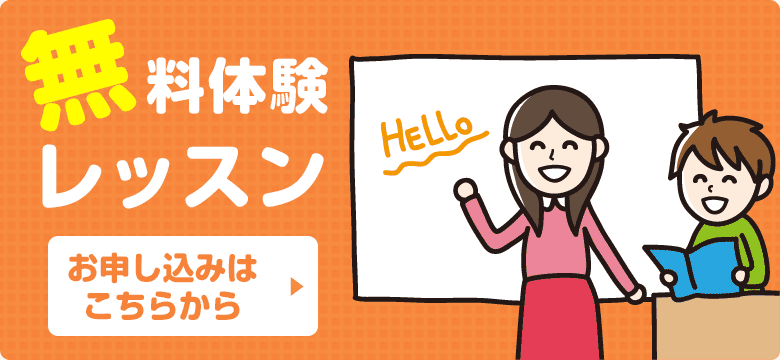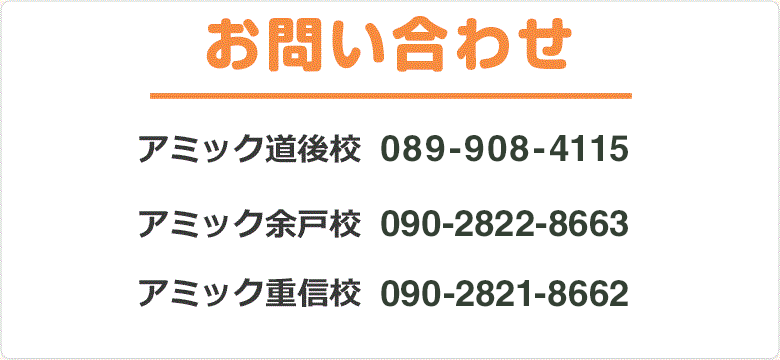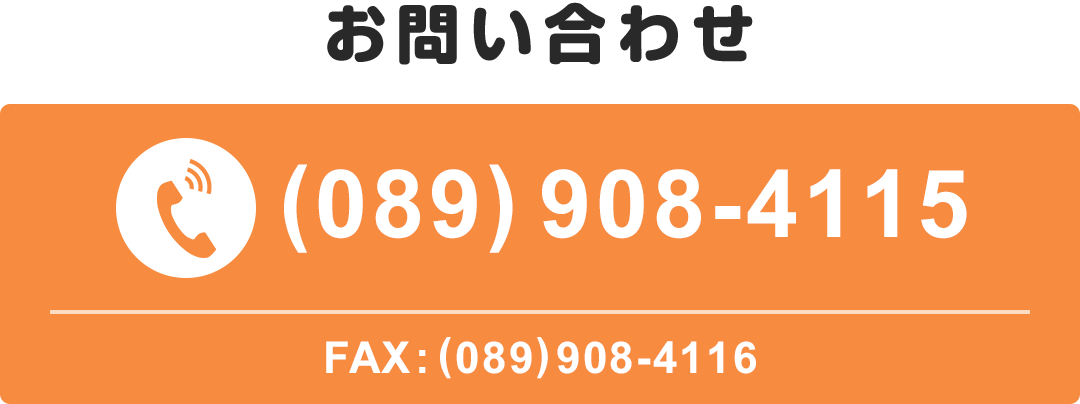ブログ
英検合格Yeah‼ 英会話 英語 アミック
重信校 Koshiro(4年生) Soma(2年生)兄弟が
揃って英検3級合格の報告をしてくれました👍✨
3級からは二次試験で面接があり、慣れない面接に最初は緊張していたお二人。担当のThomas先生に何度も模擬面接をしてもらって、満点💯目指して頑張りました^_^
試験後はクールに、出来たよ。と言っていたSomaくん。危なげなく合格を勝ち取って💮クールに記念撮影。Koshiroくんは、目指すぜ次の級❗️
アミックも引き続き応援していきます^_^
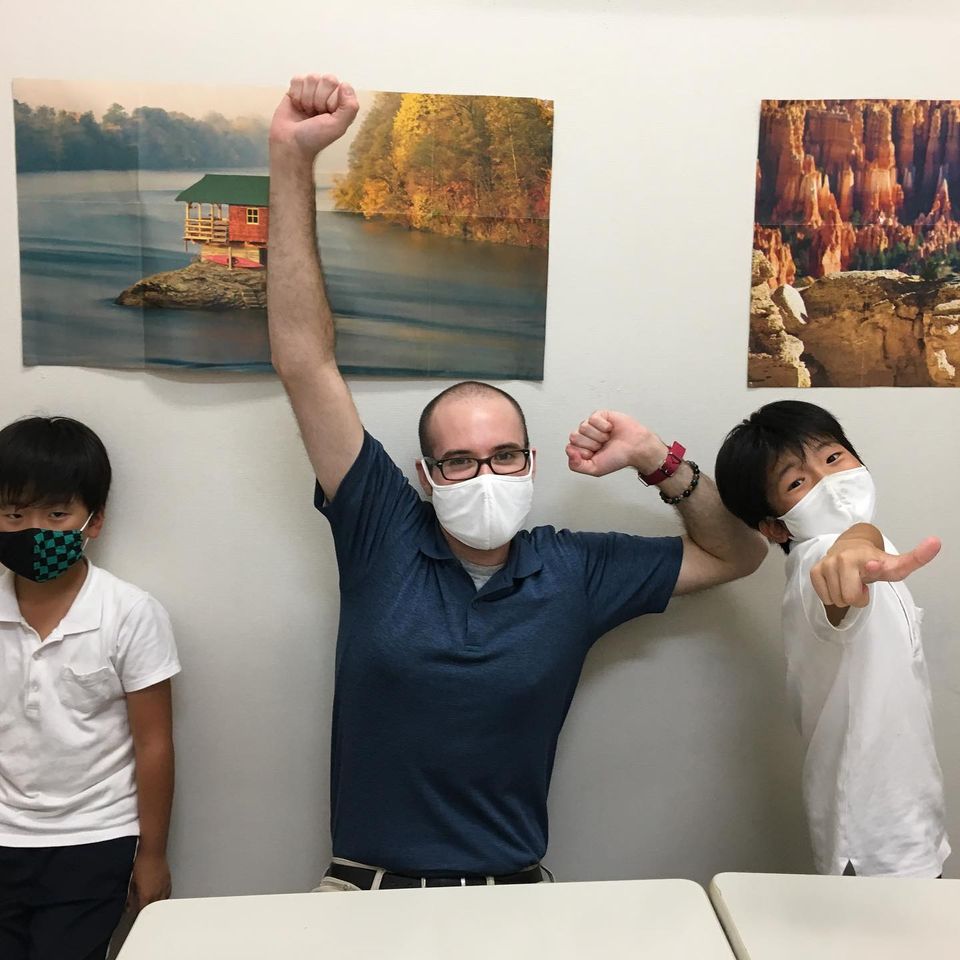
9/9の学童 英会話・英語アミック
本日も元気に英語学童スタートです!
まずは小学校の宿題タイム…
おやつを食べたらジョー先生と室内で始まるドッジボール🎾
柔らかいボールなので当たっても大丈夫です🙆♀️
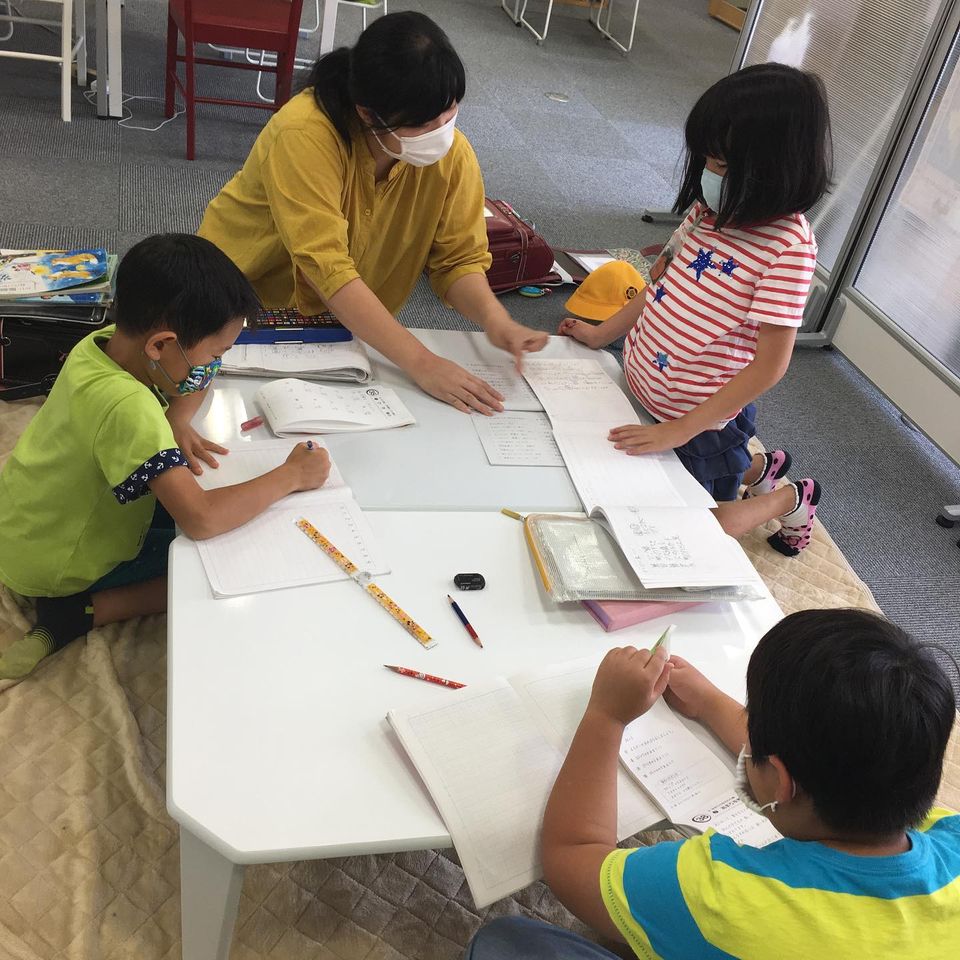
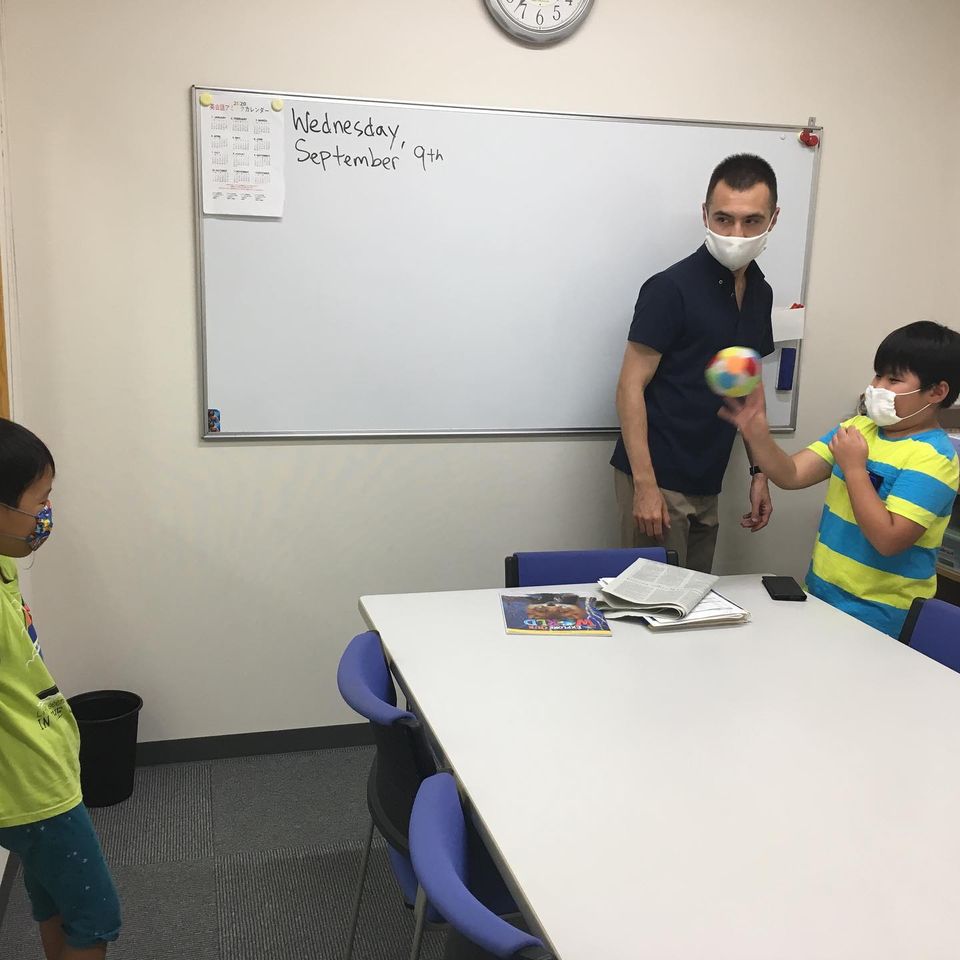
Shane’s class 英会話 英語 アミック
シェーン先生の発音矯正クラスから英会話レッスン⭐️
みんな集中してます‼️
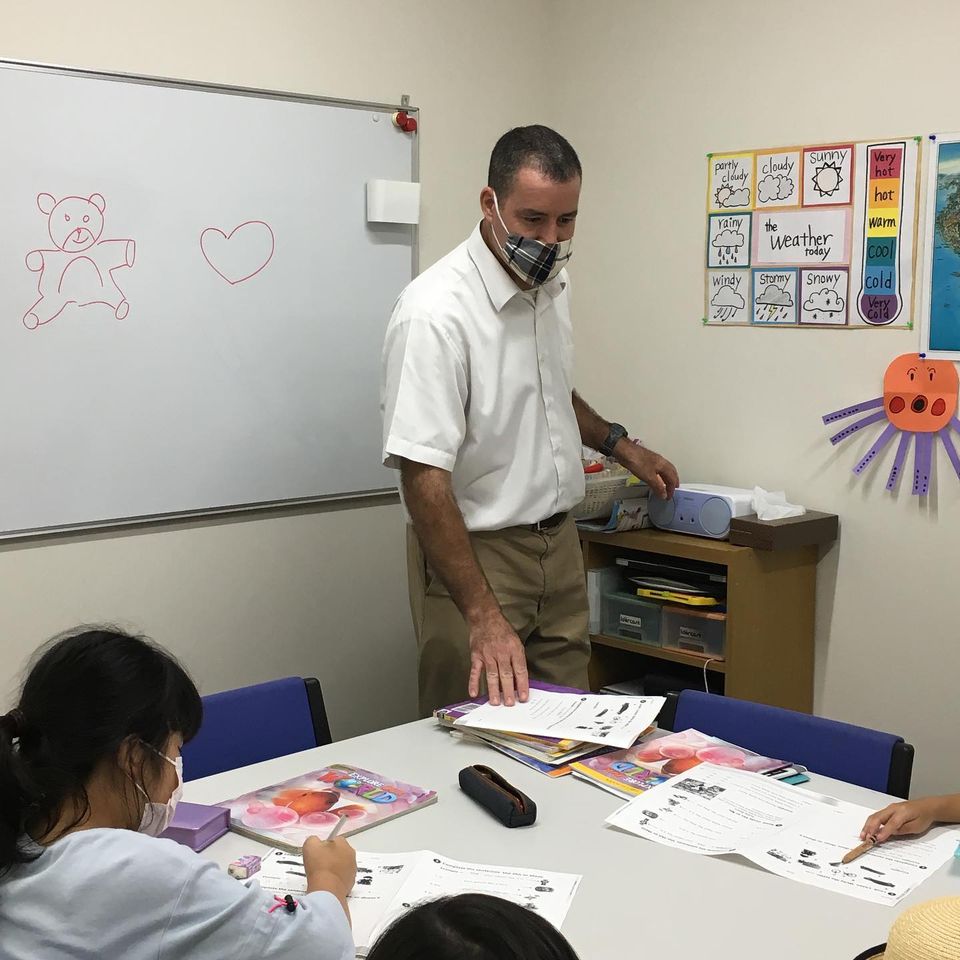
余戸校英語学童にて 英語 英会話 アミック
ベロニカ先生と英語で1.2.3…とアルファヘ
何を描いたか分かるかな〜?
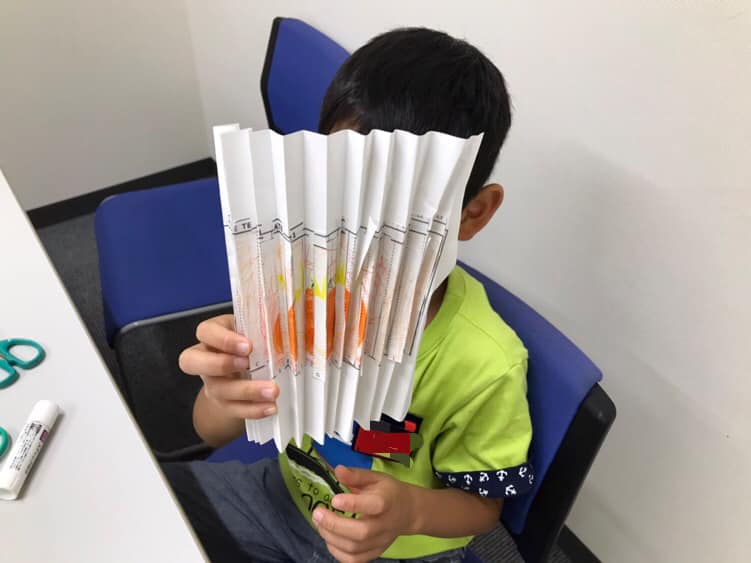
英語学童@余戸校 英語 英会話 アミック
本日も英語学童オープン🤩
オンラインで外国人とゲーム中です。
3時間お預かりは宿題したり、おやつ食べたり、ゲームしたり、みんな楽しんでます!!
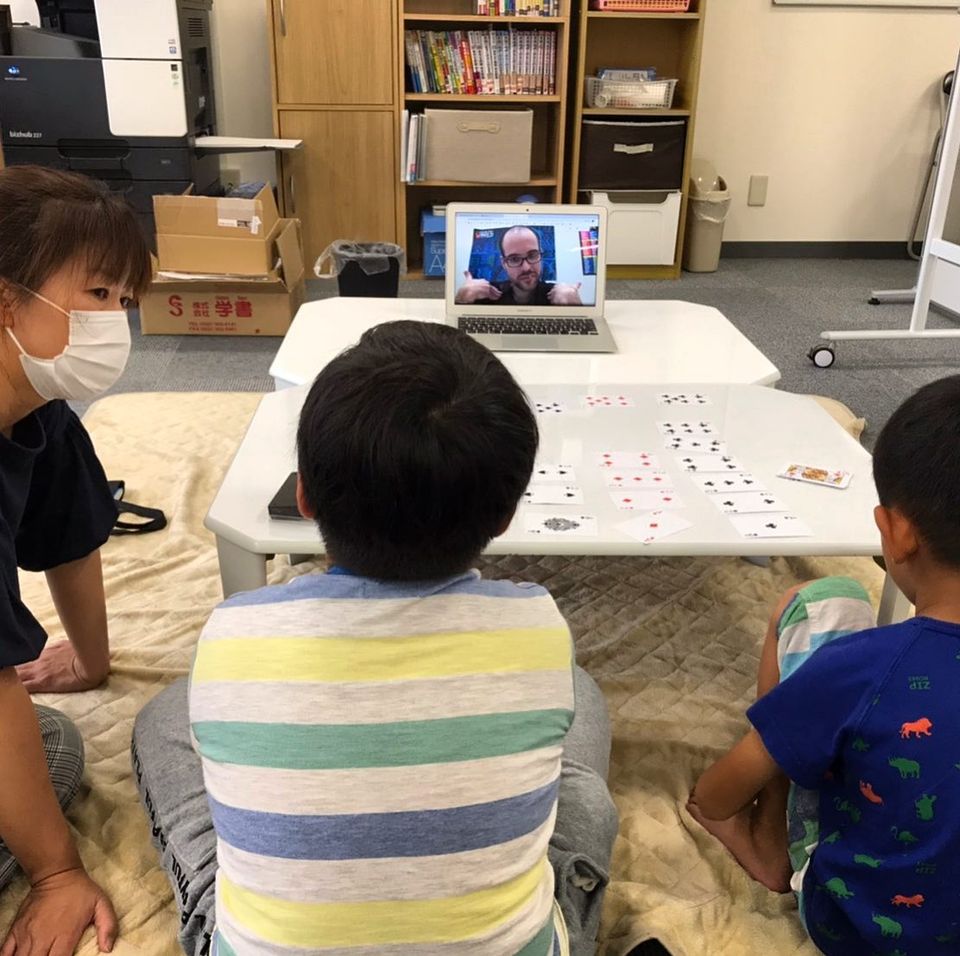
アミックリンクまもなく始動!英会話・英語 アミック
まもなくアミックのオンラインスクール
「アミックリンク」のサイトがオープンします!!
なかなか準備作業が進まず
予定より大幅に遅れてしまいましたが😅
なんとかやっとあと一息のところまできました💦
トップページの写真は生徒さんや先生達にもご協力いただいて
とってもかわいく準備できていますよ〜🤗
今は最終仕上げの段階。
ネイティブや日本人の先生と楽しみながら英語の力がつく
本格的なサイトです。
乞うご期待!!
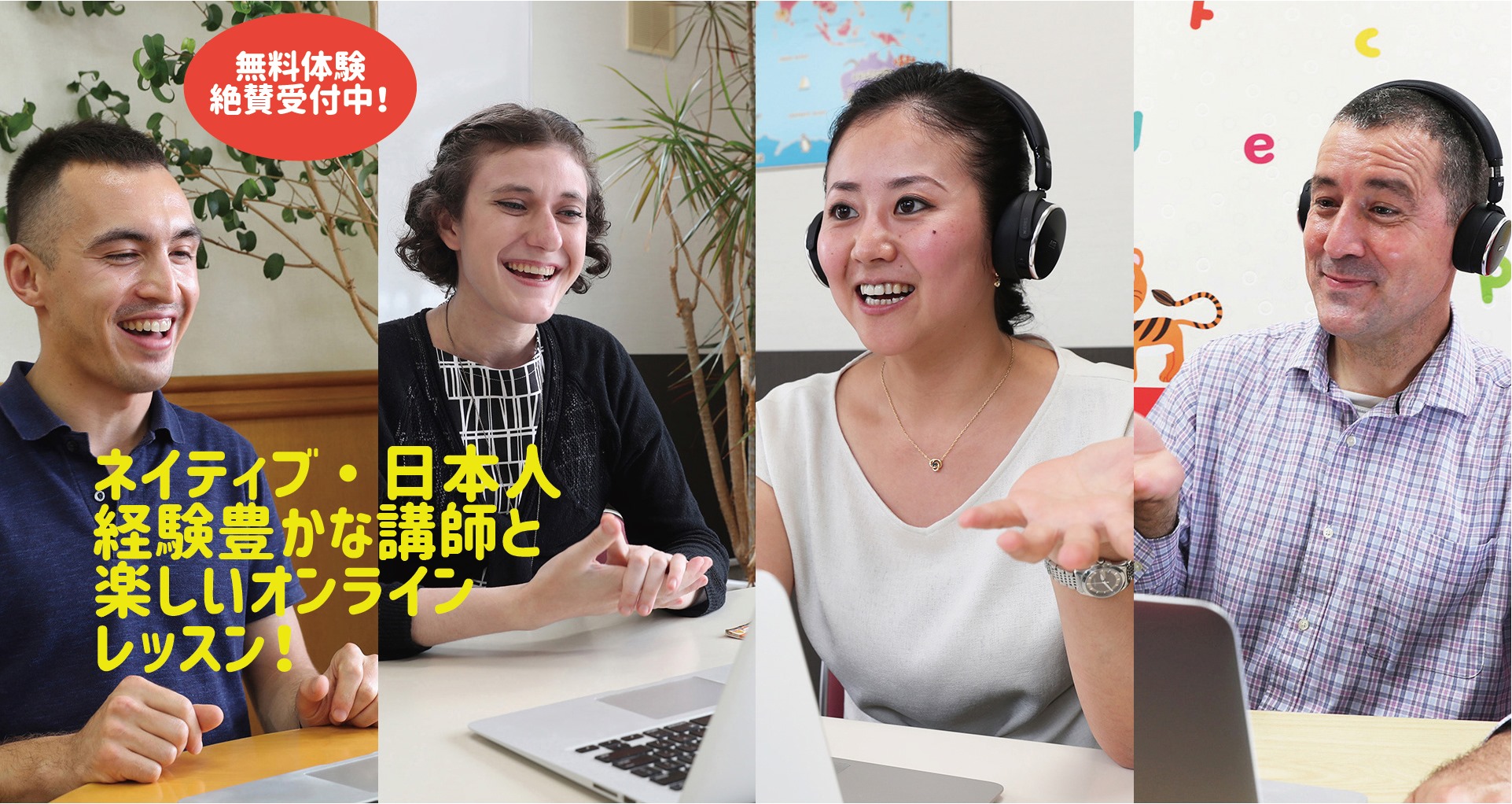
Comic Books Across Cultures 英会話・英語 アミック
These days, it seems most of the children around me are enamored with Kimetsu No Yaiba. I can often hear elementary aged students singing the theme song or imitating the parodies that have cropped up all over Youtube. I have always found Japan’s fascination with comic books or manga, very interesting.
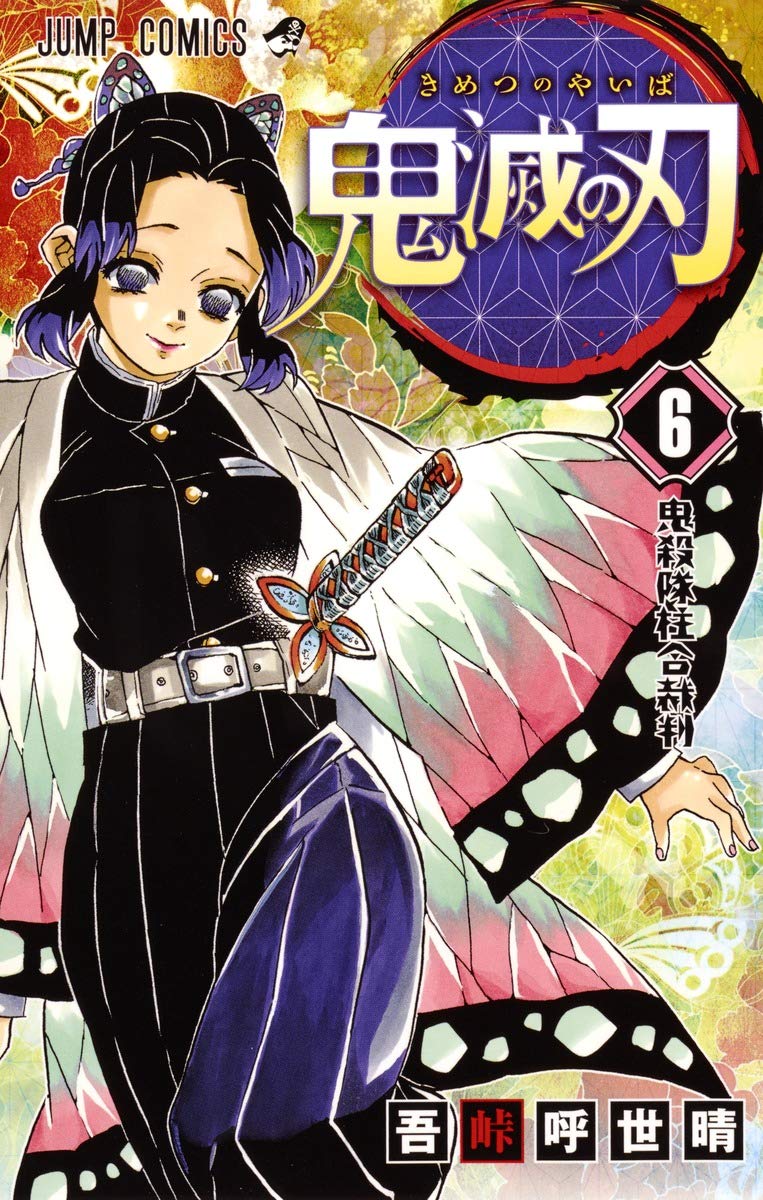
In America, traditionally comic books were for children, even though only a small number of children read them nowadays. The majority of comic book characters revolve around super heroes. Recently, DC and Marvel super hero movies have become popular all around the world. A few adults like comic books as well. Some comic books are collectibles and end up being investments, which is part of the reason why a few adults like them. The very first Super Man comic from Action Comics costed $0.10, but now in great condition is worth $3,200,000. Another reason of course is the art and the story. I semi-seriously collected comic books in my high school days, but I didn’t have any valuable ones. Some of the independent comic book companies had really good artists and story writers, so even though I wasn’t a little child, I still really enjoyed reading those comics.
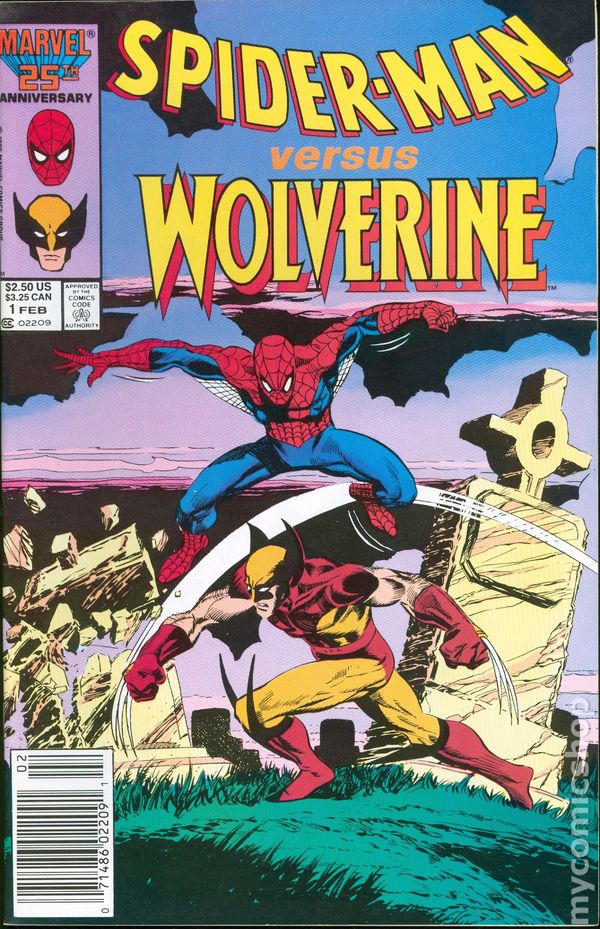
You can generally only find comic books in a comic book store, hobby shop, book store or a discount department store- like Aeon in Japan. You can only usually find independent comics at a comic book or hobby shop. American comic books are generally very thin and in color. They are about B5 in size. The price can vary, but they usually run about $4.00. Collectors also tend to buy hard plastic sleeves to keep their comic books in “mint” (perfect) condition. In high school I had about 300 comic books, so I was surprised when I saw my first Japanese comic book.
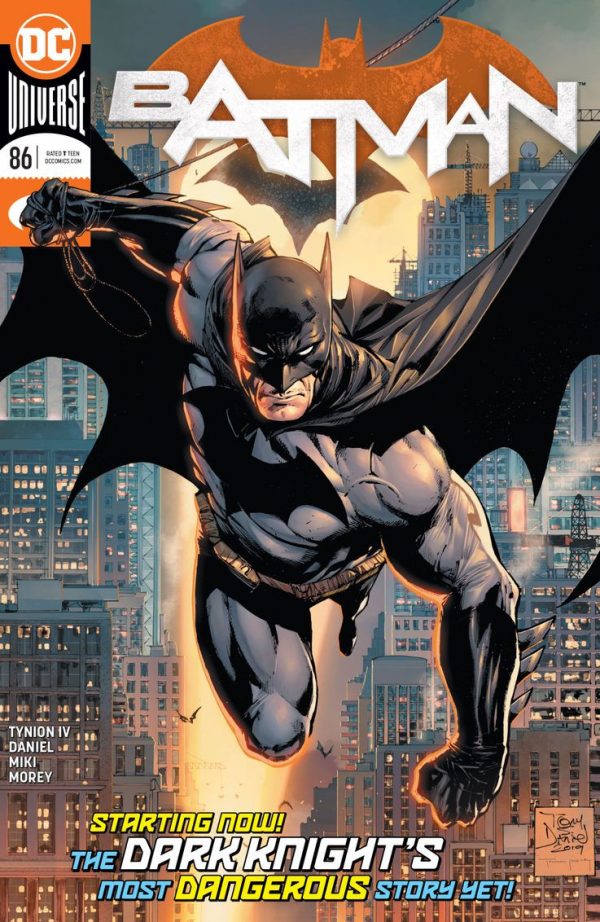
My first Japanese comic book was given to me by my family friend’s nephews. My family friend is Japanese and her nephews were visiting Hawaii. We hung out for the afternoon and they showed me a “Gameboy” for the first time…they hadn’t started selling them in America yet. They also gave me a comic book. It was very thick and all in black and white. It was “太陽の牙ダグラム”. Of course I couldn’t read it, because it was in Japanese. But the art and basic style difference was really interesting. I would see my next Japanese comic book when I moved to Japan.
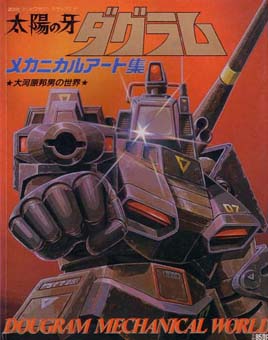
Comic books in Japan seem to be for all ages covering all types of stories. In some book stores a very large section of the store is dedicated to comic books. It is also interesting that the comics aren’t collectables in general. Walking into Bookoff was an eye opener, as well. All of the used and older comic books on sale and all of the people standing and reading showed me how ingrained the comic book culture is in Japan. Most Japanese people I know, even if they don’t openly admit it, read comic books from time to time. Which comic books do you read? Just based on the variety of stories and target ages, I’ve ended up equating movies in the US with comic books in Japan.
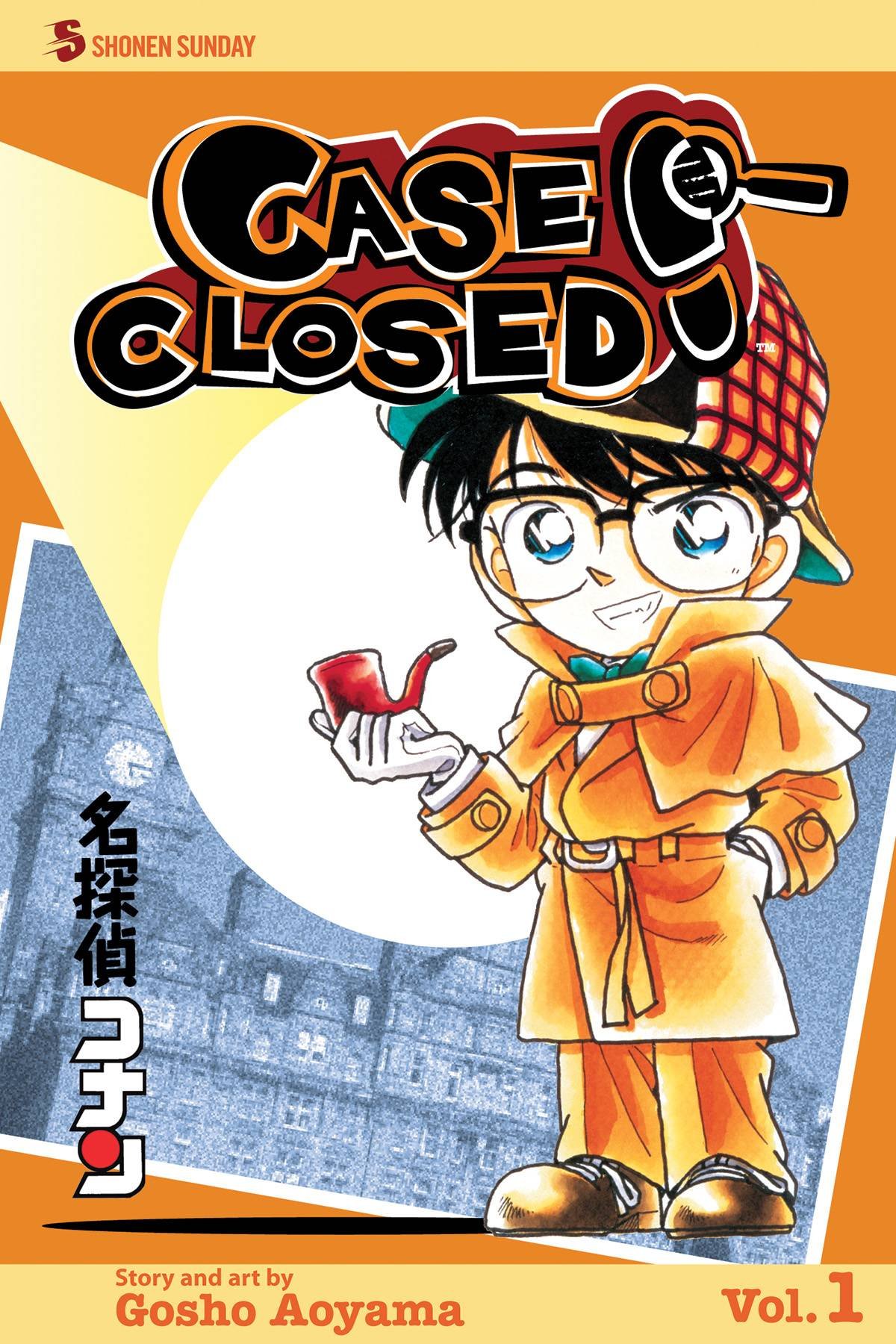
Another thing that I found fascinating in Japan is that video rental shops, not only offer a DVD and CD rental service, but also comic books as well. There are also Manga Cafés where you can read comic books by the hour. America and other English speaking countries may never have Manga Cafés, but manga which have been translated into English are becoming popular in the English speaking world. Jump Comics, Doraemon, Conan and other comic books are available in English. This is following the trend of Japanime, which especially took off in the English speaking world after the Pokemon boom in the late 90’s and early 2000’s. It’s a little funny when my cousin who lives in the rural south is posting quotes from Naruto on his Facebook. Cosplay has even become popular in the US, which is also a surprise. Pop culture is a great way to share and bridge different countries and cultures. Japanese comic books seem to be doing that now. Hopefully the world in general can continue to connect through different ways and develop more tolerance, unity and appreciation.
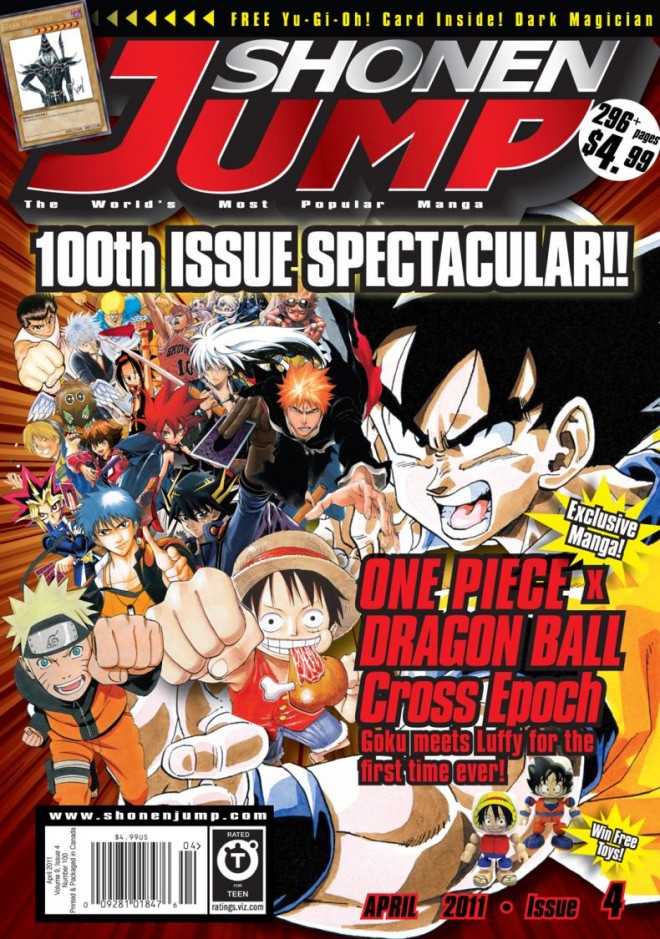
Shane
BTW, one of my favorites….

Food Expressions 英会話・英語 アミック
Everyone loves to talk about food. Favorite foods, unusual foods, local foods, and more!
Today, let’s take a look at some idioms and sayings that use different foods.
1. “Piece of cake”
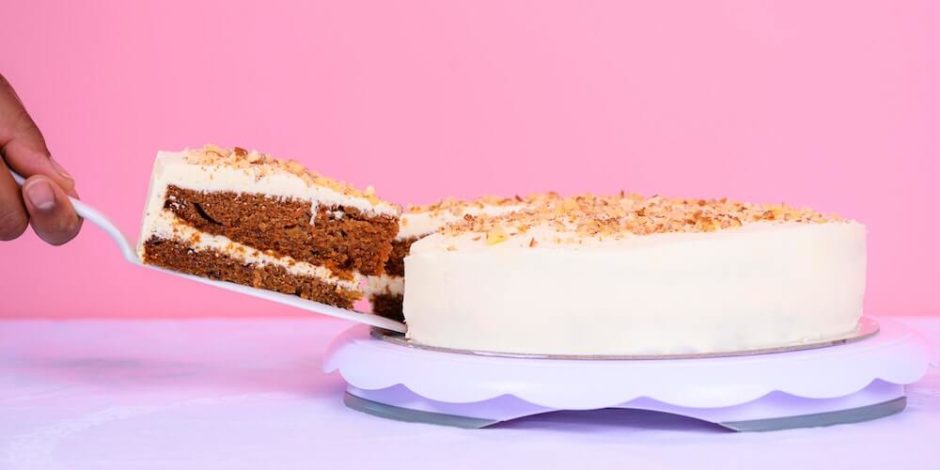
You may have heard this common expression before. When we say that something is a ‘piece of cake’, we mean that it is very easy!
Example: That test was a piece of cake! I got 100% and I didn’t even study!
2. “Cool as a cucumber”
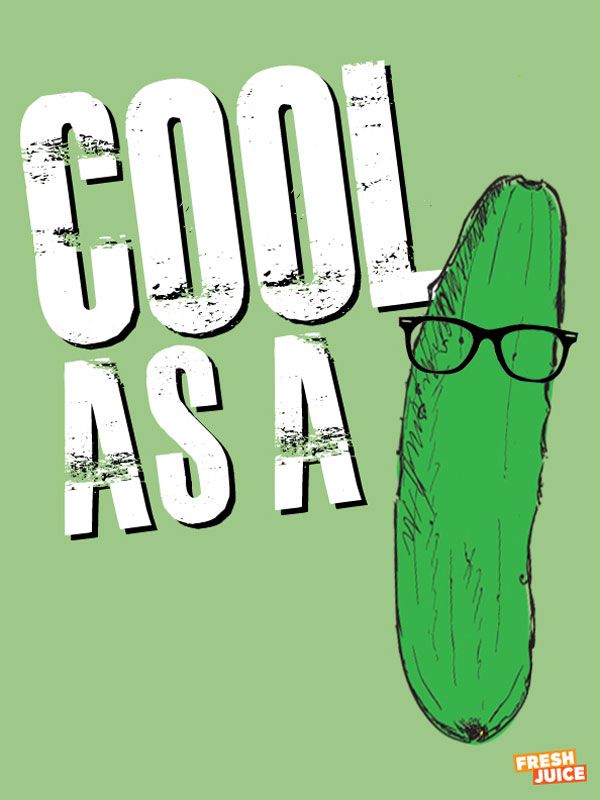
This expression is used to describe someone who acts very calm and unbothered.
Example: My brother isn’t afraid of anything. We went to a haunted house, and he was as cool as a cucumber the whole time!
3. “Two peas in a pod”
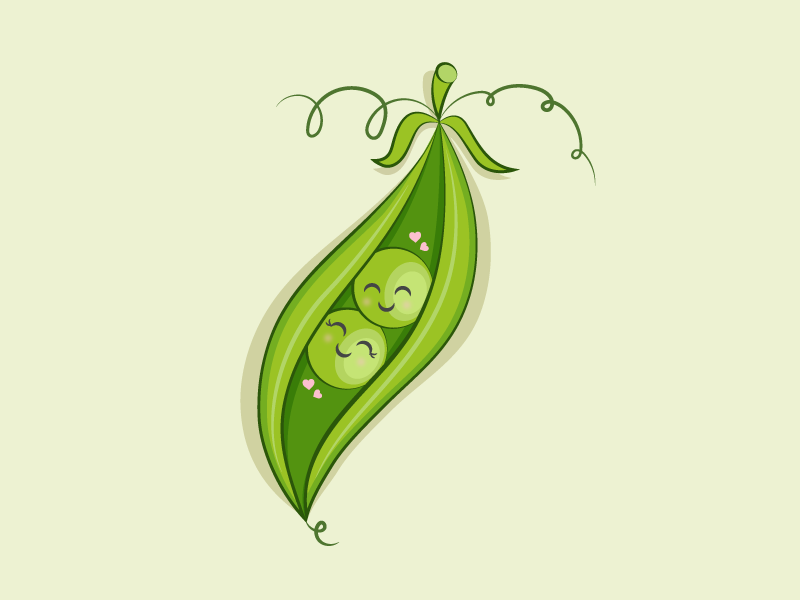
A pea ‘pod’ is the long green shell that holds the growing peas. When we say that two people are like ‘two peas in a pod’, we mean that they are very similar.
Example: Sara and I love all the same music and movies and even play the same sports. We’re like two peas in a pod!
4. “Go bananas”
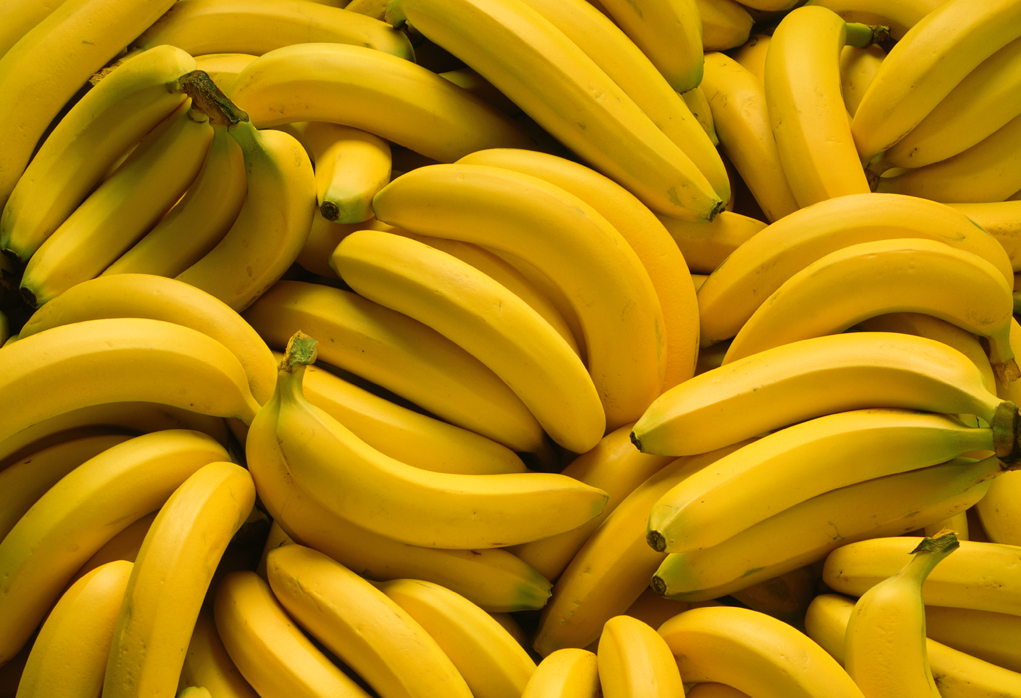
In addition to being a delicious yellow fruit, ‘bananas’ can sometimes be used to mean ‘crazy’. So ‘going bananas’ is the same as acting very crazy or showing strong emotion.
Example: When our team won the championship game, the whole crowd went bananas!
5. “In a pickle”
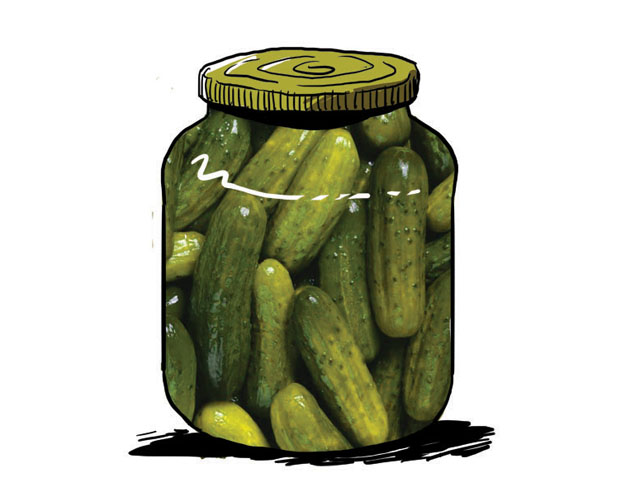
When you’re ‘in a pickle’, it means that you’re in trouble or in a difficult situation.
Example: I’m in a real pickle— I told my girlfriend we would go to the movies on Friday, but I also promised my friend we would go to a concert that day! What should I do?
These are only a few of the many expressions that use different foods. Can you think of any others?
なんでもない一日(2)英会話・英語 アミック
Hello! 重信校Hitomiです。
お盆休みはいかがお過ごしでしたか?
例年と違ってしまった夏休み、Hitomiはほとんどステイホームでしたが、おうち時間を自分なりに充実して過ごしました。主に片づけと、肩のリハビリをしておりました。
frozen shoulderになってしまったために(過去の記事参照)6月末に受けたsilent manipulationは、やはり通常のmanipulation(いわゆる整骨、整体のゴキゴキッとする施術)とくらべると、確かにsilentではありました。
首の付け根あたりから麻酔をして、感覚のなくなった腕をドクターが持ち上げて、自分では上げられなくなった位置に来た時、体の中から、
ブツッ・・ブッ・・ブヂ・・・・ブツン。
劣化したゴムが切れるような何とも切れの悪い鈍い音が響きました。
実際には切れたというより癒着した組織がはがれる音なので、ビリビリとかバリッというような音を想像していましたが、体から発するには奇妙な音が感覚のない肩から響いて・・・
「気持ち悪いでしょ?」
はい・・
「やっているほうはもっと気持ち悪いの」
すみません!
噂によると、やっているほうは鶏の手羽先を食べるときのあのぽきっとやる感覚に近いらしいです。他人の体ですから、さぞややりにくいでしょうね。
そのあと、骨を折っていないか(!)念のため調べるレントゲンを撮り、もちろん大丈夫で、そのままリハビリへ直行となりました。熱心に指導してくださるリハビリの先生との数週間の訓練を経て、休み最終日に無事、卒業となりました。まだ完全ではないのですが、今後も自分でリハビリを続けることで徐々に回復に向かうそうです。
英語学習もそう、これ以上伸びないと思うところをもう一歩踏ん張って伸ばせば限界を超えることができ、・・・
なんて、無理に英語学習のブログらしく持っていこうとはいたしません。
右手で背中が掻けるようになってから言います。
でも、英語は使ってないと鈍るので、そこは筋肉と同じと言っておきましょう。
英語がfrozenにならないよう、お盆休みも英語の訓練をしていましたよ、本当!
英語のほうはまめな努力ができるのですが、肩もまめに動かすようにいたします・・。
お盆明けも本当に暑い日が続きますが、お体大切にお過ごしください。
Hitomi
My Favorite Local Foods in Hawaii! 英会話・英語 アミック
Living in Japan is great. I really enjoy the food and nature. I do sometimes get homesick though. I sometimes really miss some of the local Hawaiian food I ate growing up. Hawaii is great, because there is such a mix of cultures. This mix of cultures means great food from all over the world. Eating is a popular pastime in Hawaii, because of the great food. Here are some of my favorite foods.
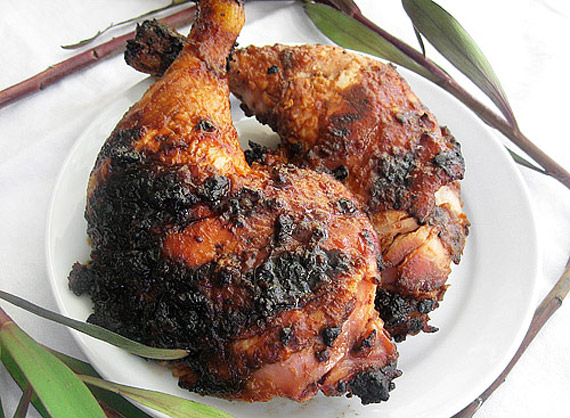
Hulihuli Chicken is one of my favorite local dishes. “Huli” means to turn in Hawaiian, so hulihuli chicken is a rotisserie chicken, marinated in teriyaki sauce and grilled over an open fire. The chicken is really tender and juicy. You can usually only get fresh hulihuli chicken at a special event or through fund raisers. Though food trucks are becoming more popular and may have hulihuli chicken on the menu.
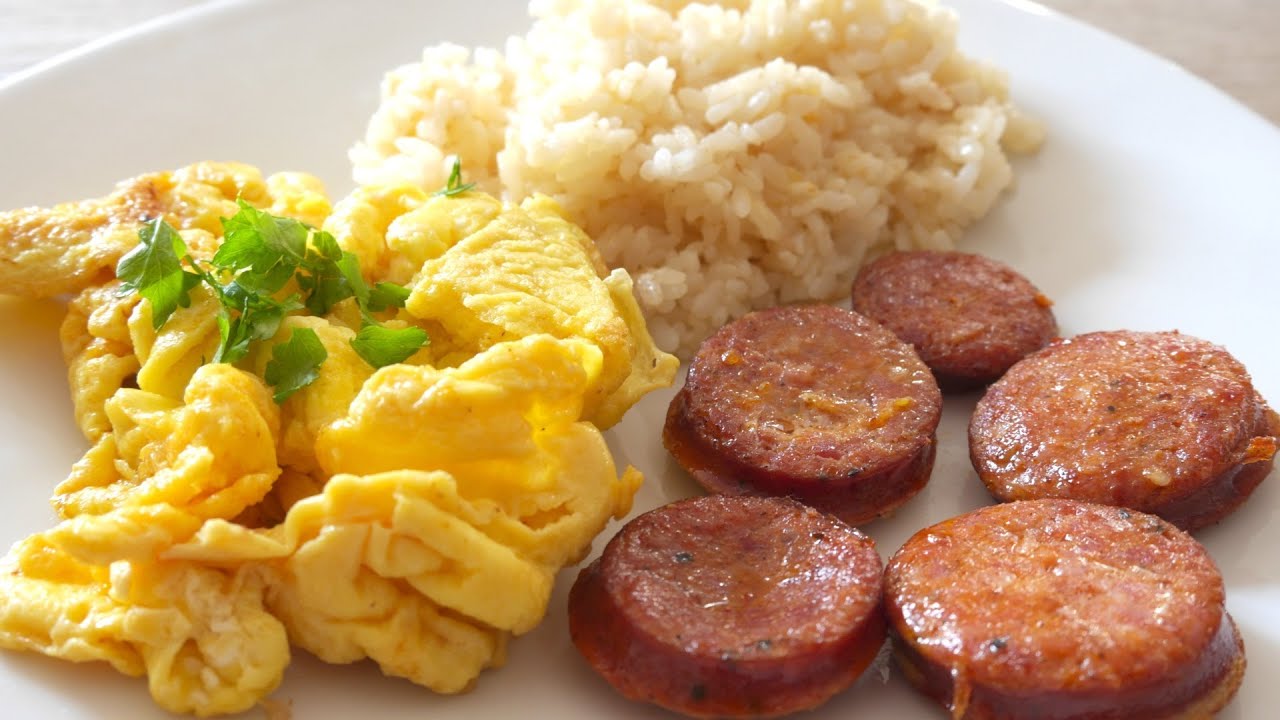
Portuguese sausage is another one of my favorite foods. It is very similar to kielbasa sausage, but very spicy. It’s most commonly served sliced and fried as a breakfast side dish. If you like spicy food, I really recommend it. You can even get it at McDonald’s in Hawaii.
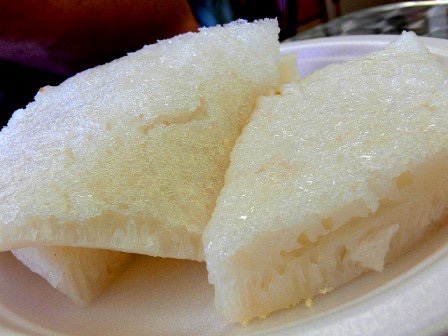
Chinese style rice cake is a dessert I love. You can sometimes buy it at food trucks or in the deli section at supermarkets. It is a bit different from Japanese rice cake- a bit lighter in texture and very sweet. It’s even a bit sticky. In university, it was a great treat after a day of classes. I crave it even now.
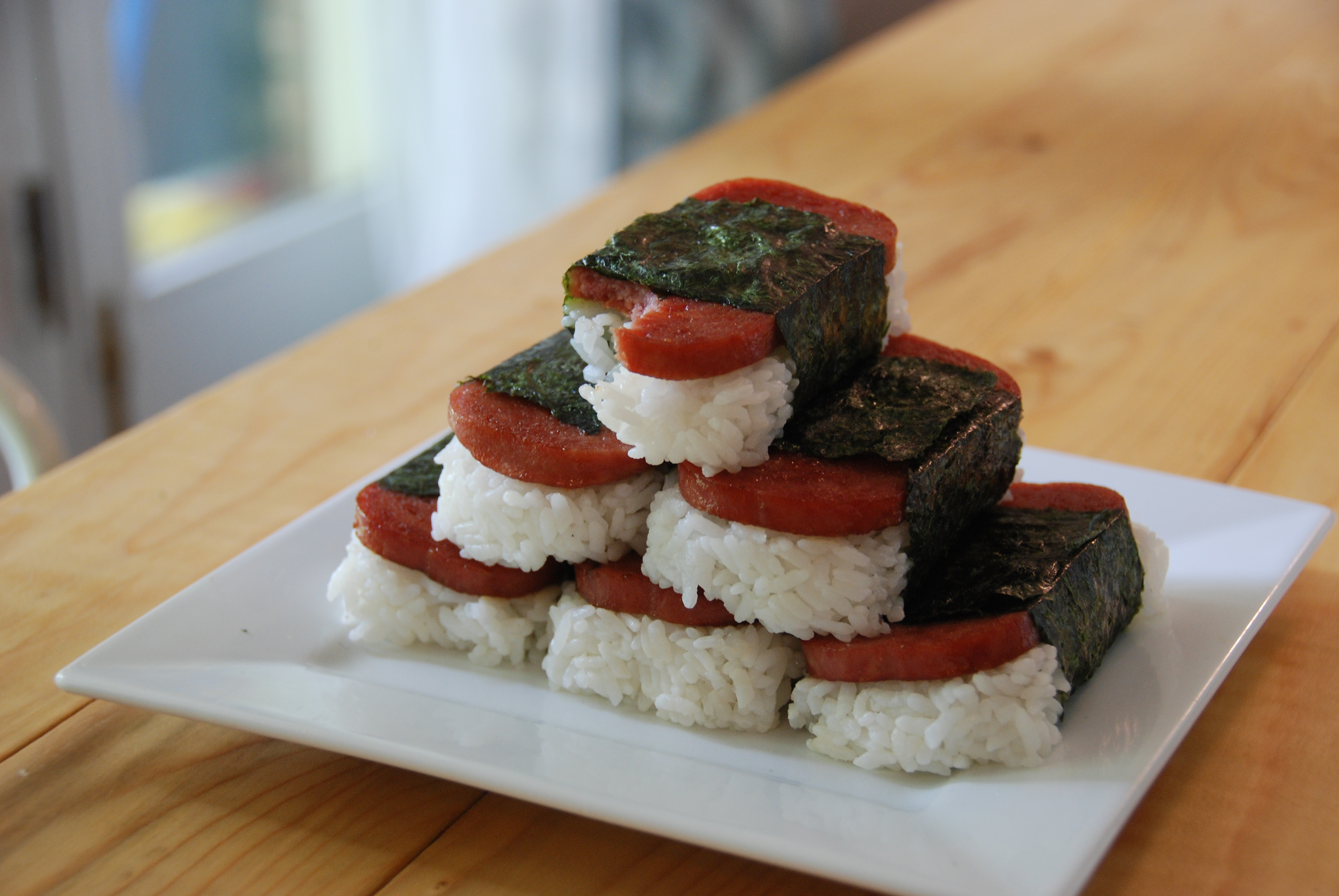
One of the final foods I’ll write about is spam musubi. This dish is a rice ball with fried marinated spam and seaweed. It is extremely popular in Hawaii and can be found in convenience stores and supermarkets. It tastes great and is a great energy booster. I occasionally make it here in Japan. It tastes just as great as the ones in Hawaii and eating it always cheers me up.
If you go to Hawaii and you have the chance, I hope you’ll try some of these great dishes. I’ve always thought that food is one of the best parts of culture… one of the most delicious parts anyway. And if you do try these dishes and you like them, try saying the Hawaiian English word for delicious- “Ono”. If you can’t make it to Hawaii, try making some of the recipes on your own. Good luck and aloha.
Shane









